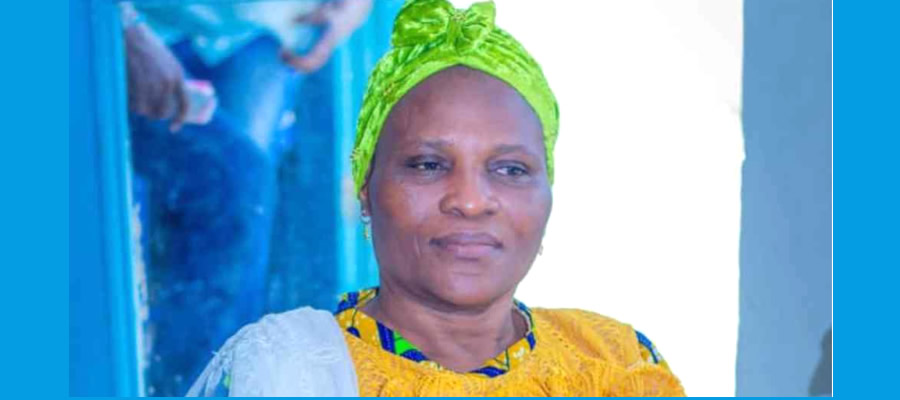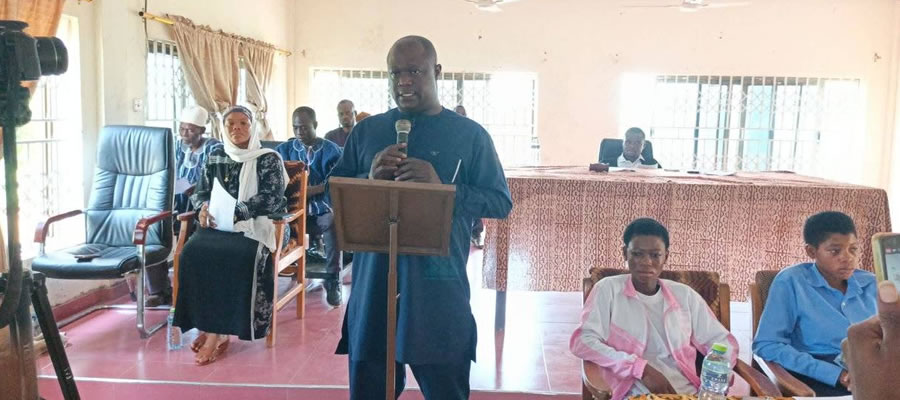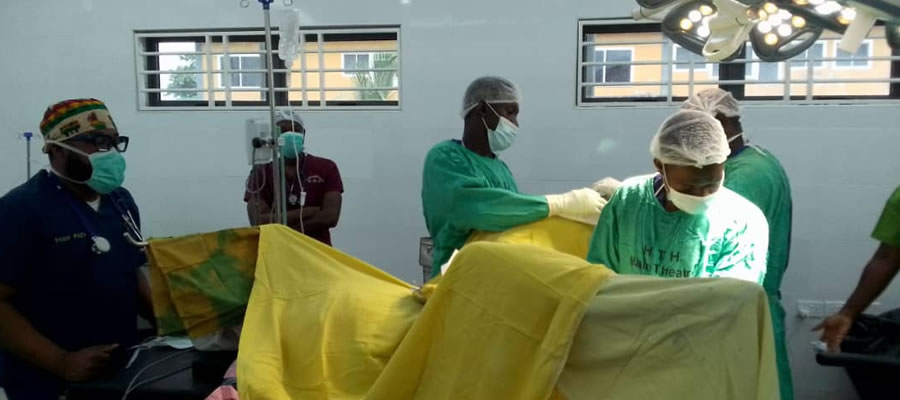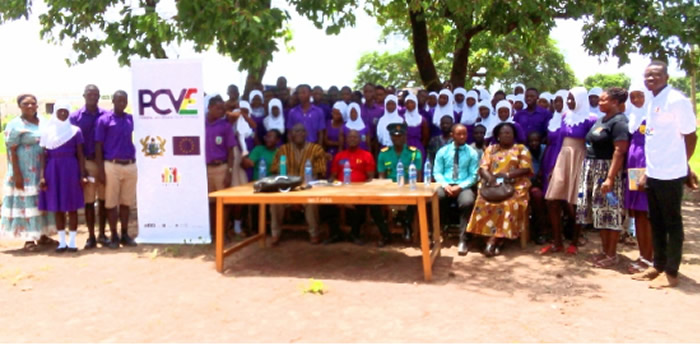
The population of the region as enumerated in the 2010 Population and Housing Census (PHC) is 702,110, with 48.6 percent (341,182) males and 51.4 percent (360,928) females. The population aged less than 15 years constituted 41.7 percent of the total, while those aged between 15 and 64 constituted 52.3 percent.
The rest (6.0%) were persons 65 years and older. The proportion of the urban population was 16.3 percent in 2010. The regional population density was 38.0 persons per square kilometre, an increase from 31.2 persons per sq. km. in 2000.
Among the nine districts in the region, Wa Municipal had the highest share of 15.3 percent of the population, while Sissala West District had the lowest share of 7.1 percent.
Organization of the Report
Overall, the Report consists of twelve chapters. Chapter One provides background information on the physical features, political and administrative structure, social structure, economy and living conditions, as well as the demography of the Upper West Region.
Chapter Two is on methodology as well as definitions of concepts used for the 2010 PHC. Chapter Three focuses on population size, composition and age, sex, nationality, ethnicity as well as religion of the people. Chapter Four deals with household size, structure and composition. Chapter Five presents information on marital characteristics of the people while information on communication technology (ICT) is provided in Chapter Six.
Chapter Seven presents data on education and literacy levels in the region. Chapter Eight discusses fertility, mortality and migration while Chapter Nine deals with economic characteristics. Chapter Ten is on disability. Data on agricultural activity and housing conditions in the region are presented in chapters Eleven and Twelve respectively.
POPULATION SIZE, COMPOSITION AND AGE-SEX STRUCTURE
Introduction
Population composition is the description of a population according to characteristics such as age, sex, marital composition, ethnicity, education and occupation. Population size, composition and age-sex structures are critical in understanding the components of population variation and change, that is, fertility, mortality and migration dynamics of any country.
The age-sex structures are useful for population projections. A country?s population composition, for example, greatly influences its needs and wellbeing. The objective of this chapter is to analyse the size, composition, age-sex structure, and changes in the Upper West Region?s population based on the 2010 Population and Housing Census. This chapter also discusses these characteristics in terms of size and distribution across districts, sex ratio, and nationality of persons enumerated during the census.
Population Size and Change
The 2010 Population and Housing Census (PHC) recorded a population size of 702,110 for the Upper West Region. The figure is the lowest among the 10 regions of Ghana.
Among the districts in the Upper West Region, Wa Municipal recorded the largest population size, 107,214 or 15.3 percent of the total population of the region. Sissala West reported the smallest population share (7.1%).
Urban and Rural Distribution
Table 3.2 shows the proportion of the population in Upper West Region living in urban and rural areas. The data reveal that only a small proportion of the population (16.3%) lived in the urban areas compared to the proportion of the population in rural areas (83.7%). Urban and rural population also varies across districts. Wa Municipal recorded the highest (66.3%) concentration of urban dwellers. Wa West, Wa East, Nadowli and Sissala West are completely rural communities (100.0%).
Age and Sex Structure
The age and sex structure of the population is influenced by birth and death rates, as well as internal and international migration. Table 3.3 and Figure 3.2 indicate the age structure for both male and female in the Upper West Region for the 2000 and 2010 Population and Housing Censuses (PHC).
Both censuses showed that there were more females than males but there are variations within the various age groups. For example, there are more males than females in the age groups from 0 to 19 years. There are, however, more females than males for the age groups from 20-69 years. In 2000, male population for age 70-85 years and older was higher than for females. But in 2010, females were more numerous in this category.
Dependency Ratio
Table 3.4 shows that the dependency ratio for the Upper West Region was 91.0. This is far higher than the national figure of 44.3. The dependency ratio varied among the districts. Those that recorded the highest dependency ratios are Wa West (105.6) and Wa East (105.6), followed by Sissala West (101.6).
The district with the lowest dependency ratio is Wa Municipal (64.6), which is below the regional level. It should be noted that the high dependency ratio observed for some of the districts are partly influenced by out-migration of certain segments of the population (e.g. those within age groups from 15-64 years old) to the south in search of jobs, leaving behind a large number of dependants. Large dependency ratios have negative economic implications such as low savings, reduction in government income from taxation and investment as well as increase in government expenditure.
Sex Ratio for the Districts
Sex ratio indicates the number of males per 100 females. Table 3.5 shows that the sex ratio for the Upper West Region is 94.5 and this indicates that there is a sharp drop of males over females. The sex ratios vary among districts. The sex ratio is highest for Wa East (102.0), with Wa West (97.8) and Wa Municipal (97.7) also recording relatively high ration. Jirapa reported the lowest sex ratio of 88.9.
Nationality
The 2010 PHC defines nationality as the country to which a person belongs. It draws a distinction between Ghanaians and other nationals. The definition grouped Ghanaian nationals into Ghanaian by birth, Ghanaian by naturalization and Ghanaian with dual nationality. Table 3.6 presents information on nationality in the Upper West Region.
The data show that 93.6 percent of a total regional population of 702,110 are Ghanaians by birth while 0.9% are Ghanaians by naturalization and the rest are non-Ghanaians. There are variations by district. For example, Wa Municipal has the highest percentage of Ghanaians by birth (15.3%), second is Lawra (14.7%) followed by Nadowli (13.6%).
The district with the lowest percentage of Ghanaians by birth is Sissala West. Wa Municipal again has the largest proportion of Ghanaians by naturalization (16.9%) followed by Nadowli (12.5%) and Lambussie Karni (12.1%). For non-Ghanaians, the percentage is highest for Lambussie Karni (20.7%), followed by Wa East (16.4%). The district with the lowest proportion of non-Ghanaians is Sissala West (6.9%).
Birthplace and Migratory Patterns
Birthplace and migratory patterns are analysed by comparing locality of birth with locality of enumeration to provide an indication of migratory movements. However, the comparison gives only a crude measure of migration. The reason is that a person may have migrated out for about a year to work and may return to his or her birthplace before or on census night.
Overall, Table 3.7 shows that 98.6 percent of people in the Upper West Region were enumerated in the locality of enumeration in the region. There are however variations in districts. The percentage of those enumerated in same locality of enumeration ranges from a high 94.0 percent in Lawra to a low 72.4 percent in Sissala East.
FERTILITY, MORTALITY AND MIGRATION
Introduction
Data on fertility – that is, the frequency of births in a population – form an important basis for studying the prospects of population growth in a country, the probable development of its age structure and the possible effects on population growth of economic and social changes public health measures and other factors (UN, 1954).
Data on mortality are needed for analysis of past and current population changes and are required for making projections of demographic change and its characteristics in order to facilitate better development planning. Migration is the third basic factor affecting change in population distribution, growth and decline of population and modifying the demographic characteristics of areas of origin and of destination. Its importance has long been recognised (Shryock and Siegel, 1976).
Fertility
The 2010 Population and Housing Census (PHC) collected both current and lifetime fertility data from females aged 12 years and older. Table 8.1 presents information on the total fertility rate (TFR) for women aged 15-49 years. The TFR is the average number of children that would be born to a woman by the time she completes childbearing at the prevailing age-specific fertility rate.
There are other fertility measures such as crude birth rate (CBR) and general fertility rate (GFR). The CBR is the simplest and most frequently used measure of fertility. It is easy to calculate because it requires only the total number of births and the total population and is expressed per 1,000 population.
It is crude because it includes all ages and both sexes in the denominator. There is no attempt to relate the births to the women at risk of having those births. The GFR, on the other hand, expresses births relative to the number of women of reproductive age. More data are required to calculate the GFR than the CBR because one has to know the age and sex composition of the population. The GFR is affected by age structure since there may be substantial variations between populations within the reproductive age range.
The TFR is the measure of fertility that is most widely used by demographers. It is calculated by adding up the age-specific fertility rates (ASFR) and is always expressed as births per one woman. It is a single-figure measure that is independent of age structure.
Table 8.1 shows that at district level, the TFR was lowest in Wa Municipal (2.4) and highest in Sissala West (3.9). Wa West, Wa East, Sissala West and Lambussie Karni were all districts with a TFR higher than the regional average of 3.45. Five districts (Wa Municipal, Sissala East, Nadowli, Jirapa and Lawra) had a TFR lower than the regional average. Differences in TFR by district may be explained largely by levels of education. Thus, in districts where women have low education, TFR is also high.
Mortality
Mortality refers to deaths that occur within a population. The probability of dying depends on many factors, such as age, sex, race, occupation and social class. The incidence of death can reveal much about a population?s standard of living and health care (Haupt and Kane, 1991).
Like the crude birth rate, the crude death rate is simply the number of deaths that occur in a population within a given year. This is calculated by dividing the number of deaths by the total population. However, this measure does not take into account factors such as age and sex which could affect variations in death rates between region, districts and countries.
Infant mortality is seen as a good indicator of the health status of a district, region or country. The level of infant mortality is known to be higher in less developed areas with poor health
status. Table 8.2 presents data on deaths among infants and under-fives per 1,000 live births that occurred in the seven years preceding the census.
The results show that the infant mortality (IMR) rate is high in Wa East (84 per 1,000 live births) while Sissala West recorded the lowest infant mortality rate of 72 per 1,000 live births. Four districts (Wa Municipal, Nadowli, Wa West, and Wa East) have an IMR higher than the regional average of 81 per 1,000 live births. The IMR in Lawra is the same as for the entire region.
The regional average for under-five mortality (U5M) is 128 per 1,000 live births. Five of the nine regions (Wa West, Wa East, Wa Municipal, Nadowli, and Lawra) have U5M exceeding the regional average. It is interesting to observe that even though Sissala West recorded the lowest IMR (72), it also recorded a high U5M rate of 134 per 1,000 live births. Wa East reported the highest IMR (84) and U5M of 134 per 1,000 live births.
Migration
Migration is one of the three main components of population change and involves the movement of people from one specified place of residence to a new one. Table 8.3 presents the distribution of population by nationality, sex and district. The data show that more than nine out of every ten persons (93.6%) living in the Upper West Region were Ghanaians by birth. Non-Ghanaians constitute 3.0 percent, followed by Ghanaians with dual nationality (2.6%).
The district data show that Lawra (95.8%) and Jirapa (95.5%) recorded the highest percentage of Ghanaians by birth, which was above the regional average of 93.6 .percent. The district with the lowest percentage of Ghanaians by birth is Wa East (88.9%).
There were no significant sex differentials, with the percentage of females who are Ghanaian by birth at is 93.7 percent compared with male of 93.6 percent although this was not the same across all districts. In the districts, Wa East 5.2% and Sissala East 5.7 percent have the highest proportions of non-Ghanaian males and females
Non-Ghanaians
Table 8.4 presents the percentage distribution of non-Ghanaians by nationality and district. Among the non-Ghanaians living in the Upper West Region, more than half (53.9%) are from the ECOWAS region followed by 26.2 percent who from other African countries.
Non-Africans constitute 19.9 percent of all non-Ghanaians living in the region. Among the districts, Sissala East recorded the highest proportion (80.1%) of non-Ghanaians from the ECOWAS region, significantly higher than the regional average of 53.9 percent.
The proportion of males from ECOWAS countries among non-Ghanaians resident in the Upper West Region was 51.3% compared with 50.0% for females. Of the non-Ghanaian females living in the region, 28.4% were non-ECOWAS Africans, higher than the proportion for males (24.1%). Similarly, the percentage of non-Africans living in Upper West Region was 21.3% for females compared with 18.5% of males.
Date Created : 11/28/2017 7:49:47 AM












 facebook
facebook
 twitter
twitter
 Youtube
Youtube
 +233 593 831 280
+233 593 831 280 0800 430 430
0800 430 430 GPS: GE-231-4383
GPS: GE-231-4383 info@ghanadistricts.com
info@ghanadistricts.com Box GP1044, Accra, Ghana
Box GP1044, Accra, Ghana